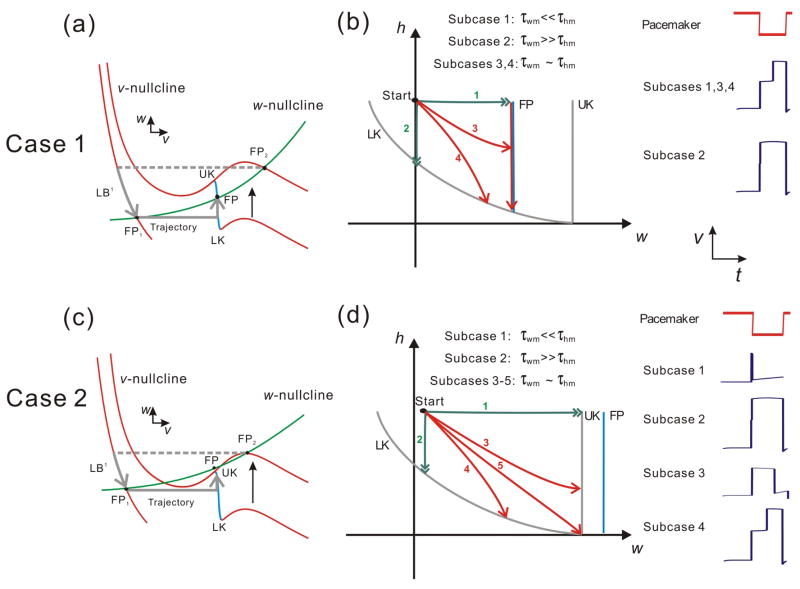Figure 4.
The dynamics of Cases 1 (a & b) and 2 (c & d) in the v-w and w-h phase planes. (a) In Case 1, the trajectory jumps to the left branch (LB1) from FP2 at the onset of inhibition and then moves along LB1 to FP1 during Tin. When the inhibition ends, the trajectory jumps to the middle branch MB and moves toward FP. At the same time, MB shrinks from LK due to the decay of h. (b) In the w-h phase plane, four subcases are possible based on the relative size of the two time constants τwm and τhm. Note, however, that the only way the trajectory can leave this phase plane is by reaching LK. (c) In Case 2 the shape of the w-nullcline causes wFP > wUK on MB. After landing on MB, the trajectory moves toward FP, and LK rises simultaneously as the MB shrinks. (d) Five subcases can be achieved in the w-h phase plane based on the relative size of τwm and τhm. In this case, trajectories 1 and 3 leave the phase plane by reaching UK whereas trajectories 2 and 4 leave from LK. The fate of trajectory 5 is unclear since it reaches the intersection of LK and UK. Insets on the right of panels b and d show the time traces of the pacemaker and the follower neuron in each subcase.

